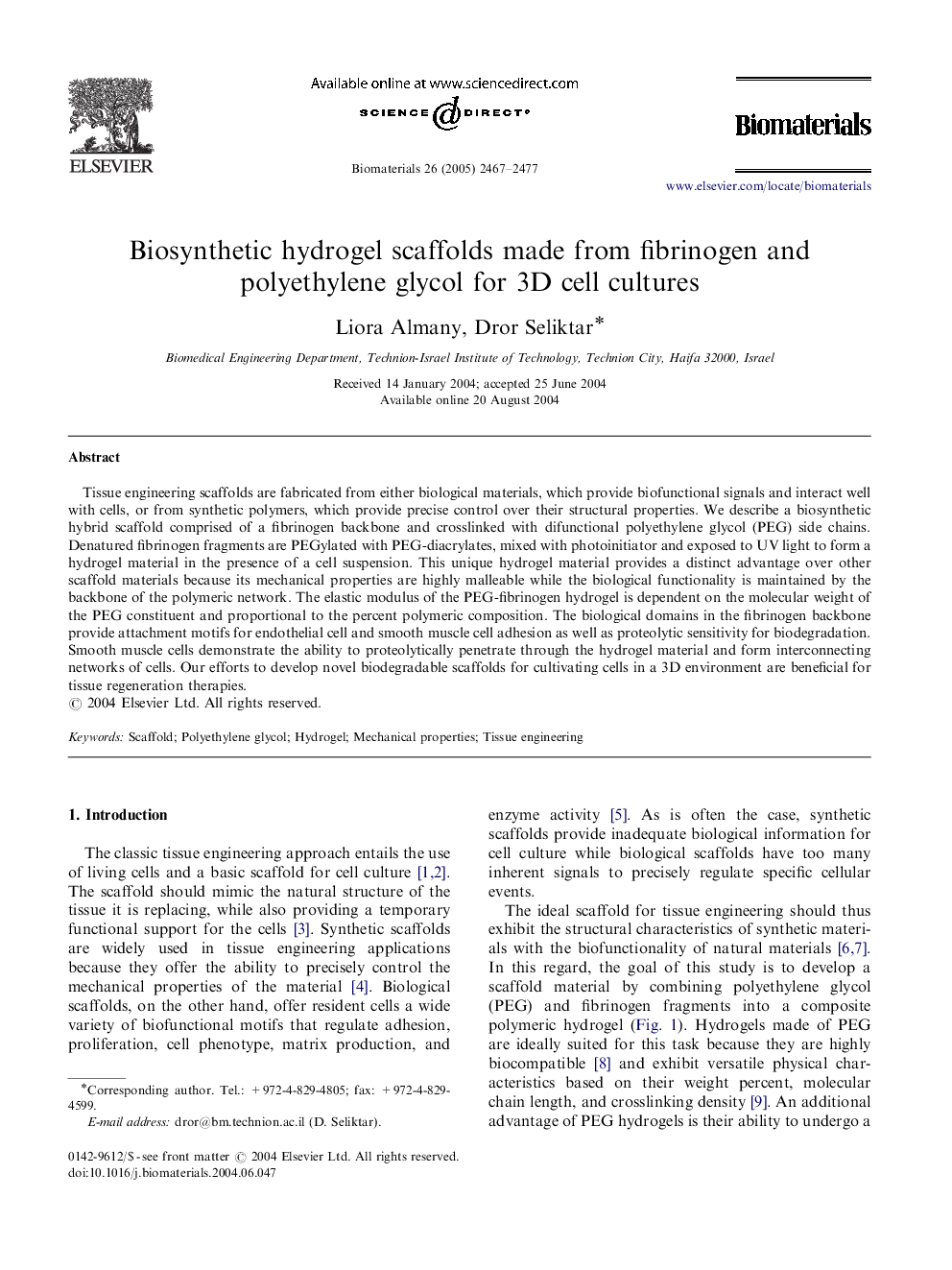| Article ID | Journal | Published Year | Pages | File Type |
|---|---|---|---|---|
| 12813 | Biomaterials | 2005 | 11 Pages |
Tissue engineering scaffolds are fabricated from either biological materials, which provide biofunctional signals and interact well with cells, or from synthetic polymers, which provide precise control over their structural properties. We describe a biosynthetic hybrid scaffold comprised of a fibrinogen backbone and crosslinked with difunctional polyethylene glycol (PEG) side chains. Denatured fibrinogen fragments are PEGylated with PEG-diacrylates, mixed with photoinitiator and exposed to UV light to form a hydrogel material in the presence of a cell suspension. This unique hydrogel material provides a distinct advantage over other scaffold materials because its mechanical properties are highly malleable while the biological functionality is maintained by the backbone of the polymeric network. The elastic modulus of the PEG-fibrinogen hydrogel is dependent on the molecular weight of the PEG constituent and proportional to the percent polymeric composition. The biological domains in the fibrinogen backbone provide attachment motifs for endothelial cell and smooth muscle cell adhesion as well as proteolytic sensitivity for biodegradation. Smooth muscle cells demonstrate the ability to proteolytically penetrate through the hydrogel material and form interconnecting networks of cells. Our efforts to develop novel biodegradable scaffolds for cultivating cells in a 3D environment are beneficial for tissue regeneration therapies.
